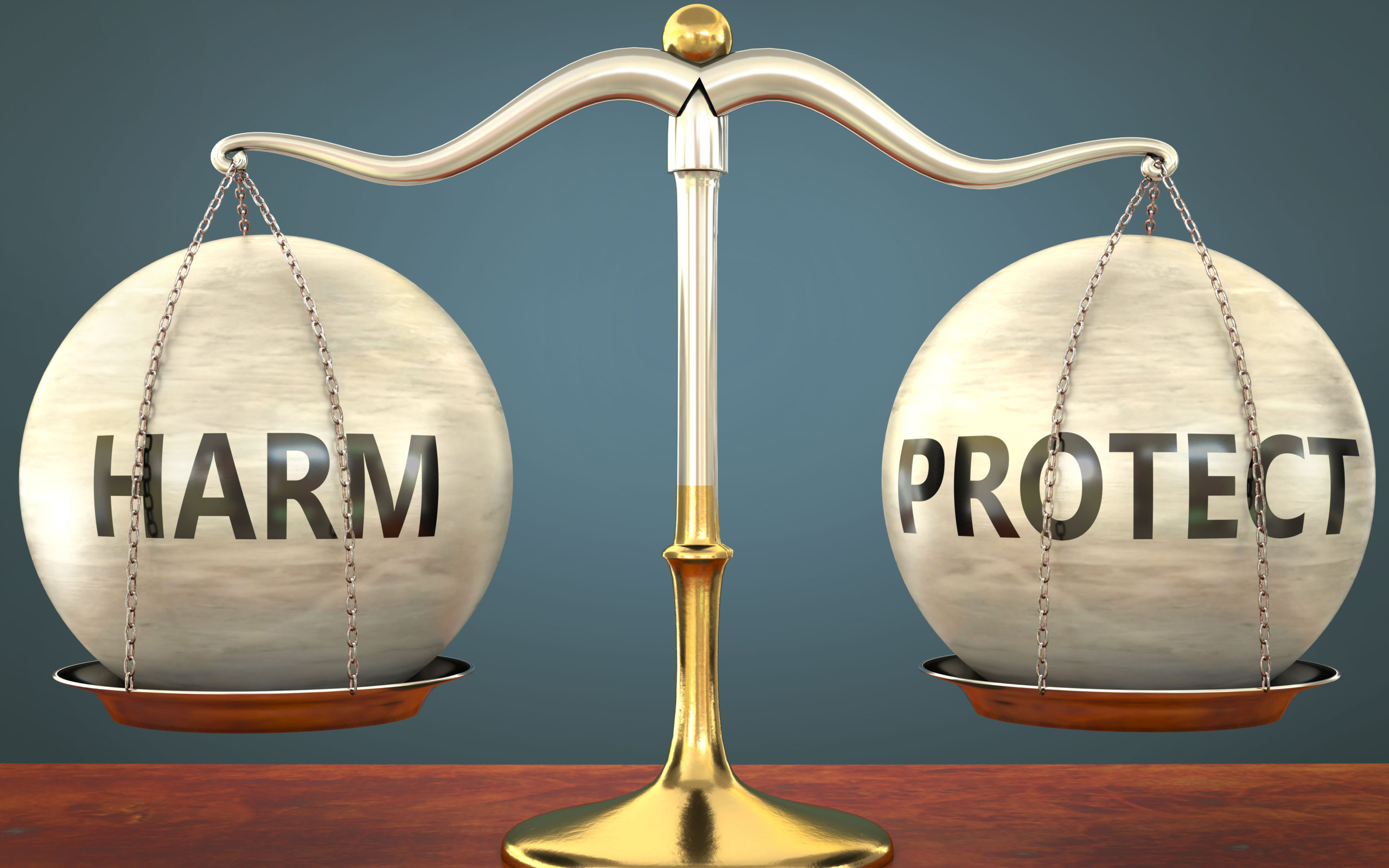In court, disputes over covenants in HOAs and condos are typically governed by the rules of equity. What this means is that courts are more inclined to consider fairness to the parties and certain outside factors than they otherwise would be in a straight breach-of-contract action. What this does not mean is that the law and the terms of the covenant go out the window and the court just tries to make things easier on everyone. The law still applies; outside considerations are just permitted as a factor.
Here is a classic HOA and condo example: an owner installs a white picket fence six feet high. They immediately get a letter from the association pointing out that the covenants allow only split rail fences no more than four feet high. The owner says, are you really going to make me remove this fence that I just installed, all in the name of uniformity? If the matter were a straight breach of contract case, the answer is unquestionably YES. The plain language of the contract says that you needed approval, and that you were bound to follow the guidelines. You did not, so the fence must be removed.
In covenant law, however, certain equity concepts apply. We have discussed a few of them, including waiver and selective enforcement. (reminder – you can waive your rights by abandoning them or by applying them inconsistently). Another issue that gets raised in the community association context is the concept of comparative hardship. According to the Court of Appeals of Maryland, the doctrine of comparative hardship “basically provides that a court may decline to issue an injunction where the hardship and inconvenience which would result from the injunction is greatly disproportionate to the harm to be remedied.” At first blush, that seems like a pretty open invitation for our aggrieved fence-builder from above to argue that they should not be compelled to remove the offending fence. And in fact many owners (and their attorneys) often argue this point in covenant proceedings. But in reality, that general statement hides the much more specific application of the question. It is not: does removing the fence create more hardship than allowing it? Rather, the question is better phrased: is removing the fence such a manifestly burdensome act that we should not enforce an otherwise valid and recognized covenant? Below are some of the factors that may be considered.
Preservation of Community Standards is a Valid Concern
Often, including in the fence-building hypothetical above, aggrieved owners argue that the somewhat nebulous concerns of the HOA are not really rights to be protected vigorously by the courts. They will contend that the neighborhood continuity or harmony are not sufficiently important to mandate them making such a dramatic change as removing a fence they already built. As you read this, you may even nod along – why should this person who already built their fence now have to remove it just because the association doesn’t like it?
Owners (and their attorneys) as well as community boards should take note that using the doctrine of comparative hardship in this fashion has been roundly rejected by courts, including those in Maryland. In Chevy Chase Village v. Jaggers, 261 Md. 309 (1971), the court reviewed a situation where an owner within an association began using his home to practice medicine and see patients in violation of the covenants. When the doctor argued that the comparative hardship doctrine should weigh his desire to practice medicine against the rather trivial concerns of his neighbors, the court disagreed: “we do not think he can invoke the doctrine by characterizing the potential harm that might result to his neighbors’ homes as comparatively negligible.” The court went on to state that their interest in preserving the residential integrity of their community was valid and merited protection under the law.
So regardless of how an owner may feel about the merits of community association covenants, a court will not engage in a straight balancing test between the two interests, and will not dismiss the concerns of an association enforcing its covenants as negligible.
Change in Circumstances may Diminish Enforceability of a Covenant
Both in the paragraphs above and in our previous discussions of waiver and selective enforcement, one theme remains common: the covenant at issue protects a valid interest that the community has demonstrated its willingness to uphold. So there is at least a presumption that this covenant was/is binding on the owner. But these issues evolve over time, and the court may hear evidence on whether the covenant remains enforceable.
For instance, courts in Maryland may validly ask: has there been a “radical change in the neighborhood causing the restrictions to outlive their usefulness?” Situations where this has arisen generally fall along the lines of waiver and abandonment – perhaps the community has gradually allowed accessory dwellings or buildings of different designs over the years. A later effort to enforce this covenant would likely be struck down on those grounds. The Court of Appeals, however, has warned parties against reading too much into the age of covenants alone: “we caution parties bound by such agreements against challenging perennially their validity in hopes that some bright line expiration date has been reached. We are not speaking of perishable food items here. The passage of time alone does not evidence decay in this scenario.” I like when courts add a little flourish; this was a good line. Covenants don’t rot in the pantry like bad bananas.
In sum, a covenant that was otherwise enforceable may be less so, and more subject to a comparative hardship analysis, if there is evidence that it has lost some of its value or import over time.
Awareness of the Covenant is Relevant
Associations are often frustrated when an owner argues the doctrine of comparative hardship even though that owner put themselves in the situation in the first place. That is, if the owner above built that fence knowing that it did not comply, then it seems somewhat unfair for them to turn around and now complain about the hardship and expense of removing the fence.
Good news for you association boards! Courts are permitted to take this into account – and quite frequently do. The question is not just how much of a hardship is it for you to remove this offending covenant violation today, but also how avoidable was the hardship you now complain of?
For instance, in Liu v. Dunnigan, the owner complained that he spent $15,000 to update his home office to allow him to practice there, and to force him to not utilize those updates was an unfair hardship. The court pointed out that Dr. Liu spent $6,000 on the home office, and then after being notified of the covenant he would be violating, spent an additional $9,000 on the updates. Noting that he acted “without regard for the possible legal validity of appellees’ position,” the court declined to impose the doctrine of comparative hardship.
Awareness of a covenant can come two distinct forms: actual notice, where the party is made aware directly of the covenant, or constructive notice, where the law imputes the knowledge to the owner of real estate where a covenant is recorded against that real estate and the owner “should have” discovered the covenant.
Several Maryland courts have determined that the owner’s prior awareness of the covenant precluded the use of the comparative hardship doctrine. If the offending owner knew (or should have known) that this enforcement action was a possible outcome of proceeding in the course of action, then that owner cannot turn around and claim hardship when forced to undo the course of action. Comparative hardship is an equitable doctrine, and the decision to proceed with knowledge of the wrongful nature of the conduct will not be rewarded in equity.
This by the way suggests that a board should engage your community association attorney early in the process to ensure that you have put any owners on notice of a potential violation. Doing so can remove this issue from consideration by the court and really cut down on the potential for litigation. It’s a theme here, but a true one: contact your attorney early to avoid spending more time (and money) on them later.
What to Know
The doctrine of comparative hardship, or even just the general concept of whether it is “fair” to require an owner to undo an action taken in violation of community covenants, is an oft-used claim and merits valid consideration. However, owners and associations would be wise to keep in mind the limitations of that doctrine: it does not negate or minimize valid concerns of community associations; covenants do not expire simply with the passage of time, and an owner who acts with knowledge of the violative nature of that action may not avail themselves of the doctrine.
As always in community association matters, remember that you are dealing with your neighbor. The principles of equity are about fairness and avoiding manifest injustice. Good faith matters – a lot.


